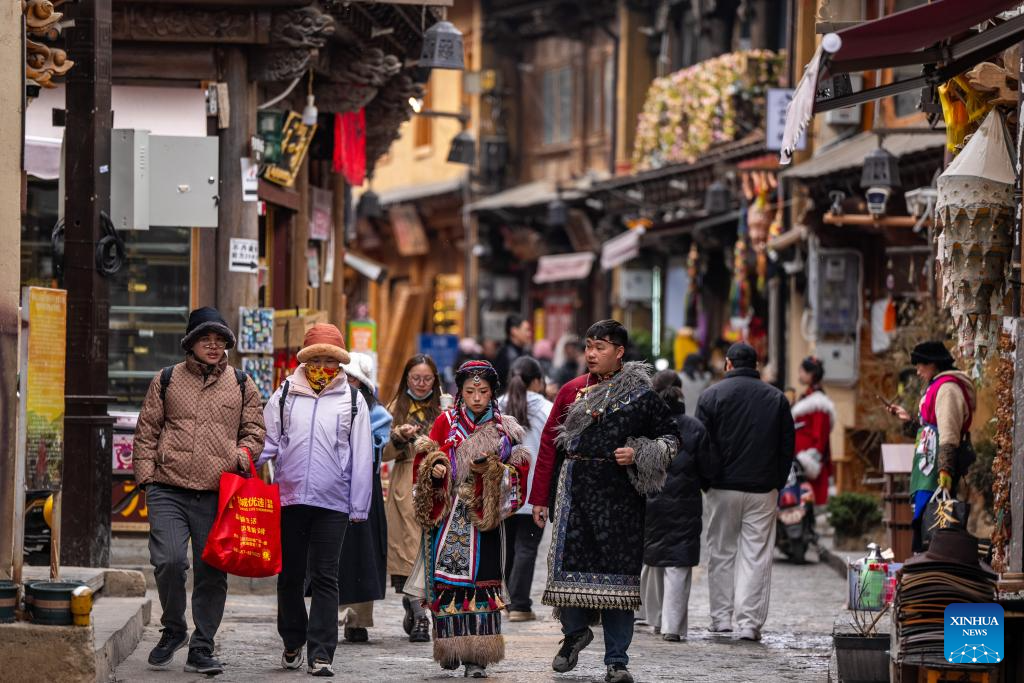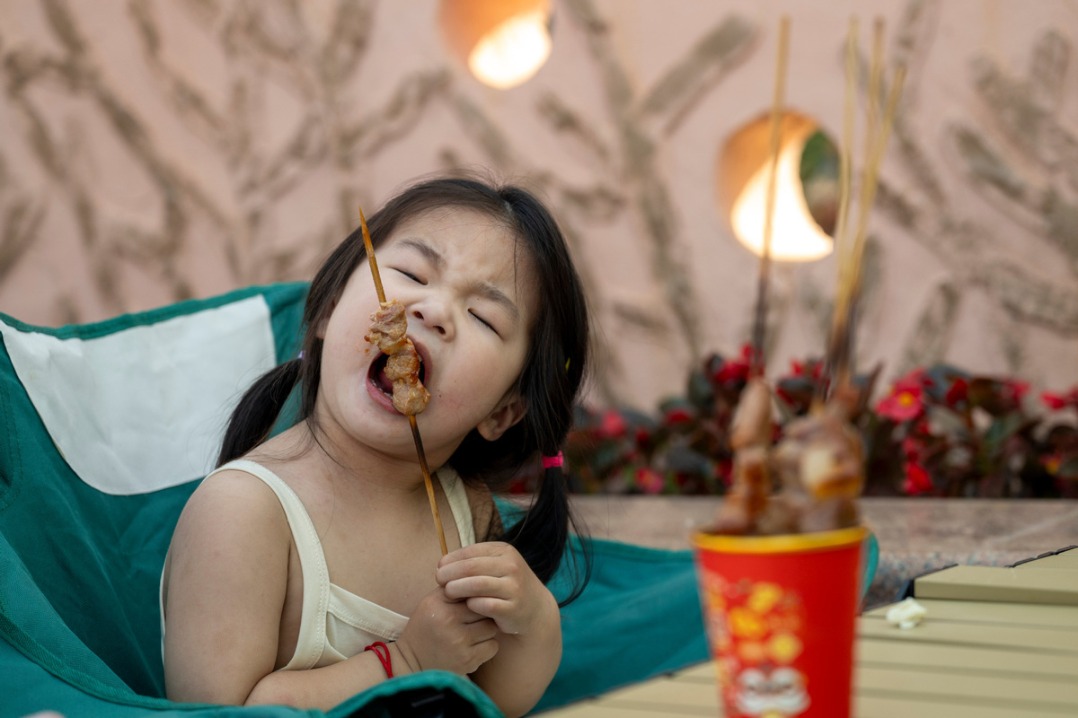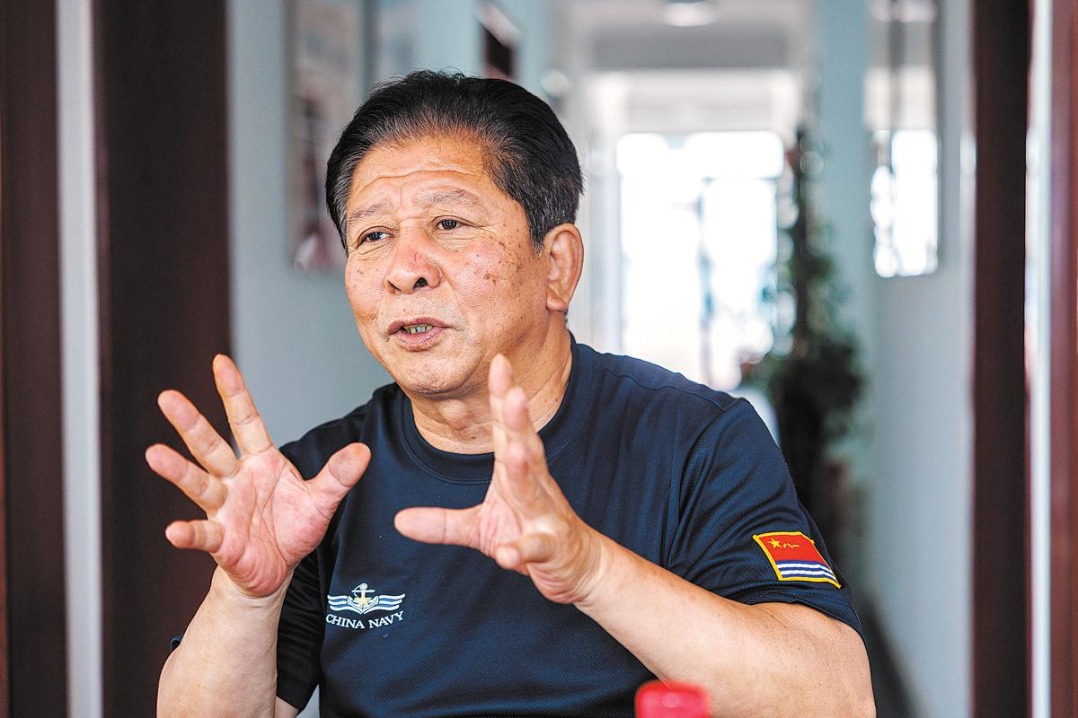Yunnan town a model of ethnic identity preservation efforts


At 6 pm, as the sun begins to soften, hundreds of dancers dressed in various ethnic costumes gather in a large circle at the main square of Dukezong ancient town in Shangri-La, Yunnan province. Accompanied by music, they sing and dance, drawing curious tourists to join in.
On summer and autumn evenings, such song and dance activities are a daily occurrence in the square. The melodies are enchanting and the singing pleasant, as people from different ethnic groups come together to perform traditional dances and songs.
"In recent years, there has been a growing enthusiasm for intangible cultural heritage in our area. People's awareness of their cultural identity and the protection of heritage projects have significantly increased," said Wang Guoxin, director of the planning and protection department at the management center of Dechen ethnic cultural ecology protection zone.
Since the establishment of the national-level ethnic cultural ecology protection zone in Dechen Tibetan autonomous prefecture in 2023, this region, home to 26 ethnic groups including Tibetan, Lisu and Naxi, has intensified efforts to protect ethnic culture and intangible cultural heritage through enhanced policies and increased funding.
With the implementation of the Administrative Measures for National Cultural Ecology Protection Zones in March 2019, the Ministry of Culture and Tourism approved the establishment of 24 cultural ecology protection zones nationwide. These zones aim to protect ICH projects and the cultural and ecological environments that nurture and sustain them, an approach hailed by experts as China's unique approach to ICH protection.
Wang said that a series of local laws and regulations have been introduced in the region, such as the detailed regulations on the region's protection of ICH and the management measures for the use of special funds for ICH.
In addition, the annual fixed subsidies from the central government are substantial, and the local government also provides matching funds. From 2013 — when Dechen became a pilot cultural and ecology protection zone — to 2024, the central government has allocated over 70 million yuan ($9.77 million), added Wang.
Ten years ago, black pottery crafted by local Tibetan artisans using traditional techniques was primarily used for everyday items such as butter tea pots, and there were only a few artisans skilled in this craft.
Today, with the establishment of black pottery training workshops in towns and villages, more locals are learning this skill. Their products have been integrated with contemporary life, transforming into exquisite decorative pieces found in guesthouses, hotels, cafes and other public spaces.
"The black pottery making craft was on the brink of disappearing many years ago. Its production has now become a pillar industry in Nixi town, the birthplace of this traditional art," said Wang.
The local government provides fixed annual subsidies to the inheritors of these crafts and establishes exchange and exhibition centers in various locations. These centers regularly invite the inheritors to showcase their skills. Additionally, the government encourages these artisans to take on apprentices and spread the cultural heritage behind these crafts to a wider audience.
During the workshops, inheritors are encouraged to involve local marginalized or low-income groups. This initiative aims to increase their income and contribute to rural vitalization, said Wang.
Darma Ludrup, director of the management center of Dechen ethnic cultural ecology protection zone, said that for local ethnic dances such as the Guozhuang (a traditional Tibetan group dance) and Naxi, performing groups are encouraged regularly at major events and public venues to increase public participation. There are also plans to collaborate with regions like Sichuan province and Xizang autonomous region to transform these ethnic dances into a regional cultural feast, allowing more people to experience the beauty of ICH.
"The establishment of the protection zone allows us to support many intangible cultural heritage projects and inheritors through policies and strong funding. Their inheritors, in turn, encourage more people to participate, ultimately leading to widespread public involvement. This creates a strong societal atmosphere for cultural preservation, which is our ultimate goal," said Darma Ludrup.
- Yunnan town a model of ethnic identity preservation efforts
- Zones give impetus to heritage protection
- Graduates drive post-gaokao wave of consumer spending
- Ministry warns of flood risk in north, drought in south
- Northern China braces for torrential rains
- From rickety bikes to automated strollers, modernization transforms county





































